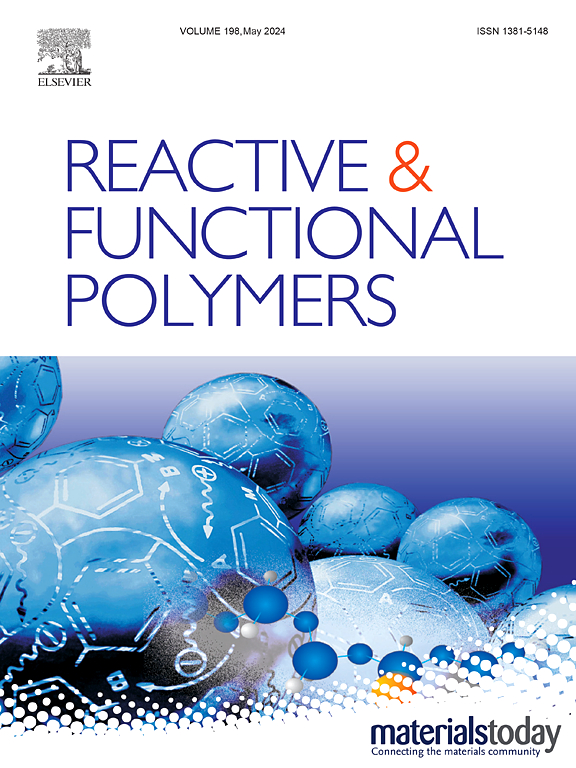一种富氮有机聚合物,用于二氧化碳的利用和二氧化碳与环氧化物的环加成转化
IF 4.5
3区 工程技术
Q1 CHEMISTRY, APPLIED
引用次数: 0
摘要
在化石燃料消费的推动下,大气中的二氧化碳水平急剧上升,对环境构成了重大挑战,需要采取创新战略来减缓和利用二氧化碳。本研究介绍了一种新型的无金属富氮有机聚合物CMBr-OP,它被设计为二氧化碳与环氧化物环加成生成环状碳酸盐的高效催化剂。CMBr-OP通过三聚氰胺和三聚氰胺的一步聚合合成,然后用溴乙酸进行功能化,整合了多个活性位点,包括富氮三嗪单元和溴官能团,协同增强了催化性能。在温和的反应条件下(110°C, 1mpa CO2压力,6小时),CMBr-OP在不需要辅助催化剂或溶剂的情况下获得了99.6%的收率。FTIR、XPS、SEM和BET等综合表征技术证实了其分层多孔结构、高表面积和均匀分布的活性位点,有利于高效的CO2活化和环氧化物开环。该催化剂具有显著的多功能性,可有效催化多种环氧化物,并具有良好的可回收性,在连续五个反应周期中保持高活性。DFT计算揭示了氢键供体、氮位点和溴离子在激活环氧化物和CO2方面的关键作用,强调了CMBr-OP内部的协同作用。这项工作代表了二氧化碳利用可持续催化系统的重大进步,与绿色化学原则保持一致,并为旨在减少二氧化碳排放和促进环境友好化学过程的工业规模应用提供了有希望的候选物。本文章由计算机程序翻译,如有差异,请以英文原文为准。

A nitrogen-rich organic polymer for CO2 utilization and conversion through cycloaddition of CO2 with epoxides
The soaring levels of atmospheric carbon dioxide (CO2), driven by fossil fuel consumption, pose significant environmental challenges, necessitating innovative strategies for its mitigation and utilization. This study introduces a novel, metal-free nitrogen-rich organic polymer, CMBr-OP, designed as an efficient catalyst for the cycloaddition of CO2 with epoxides to produce cyclic carbonates. Synthesized through a straightforward one-step polymerization of cyanuric chloride and melamine, followed by functionalization with bromoacetic acid, CMBr-OP integrates multiple active sites, including nitrogen-rich triazine units and bromine functionalities, which synergistically enhance catalytic performance. Under mild reaction conditions (110°C, 1 MPa CO2 pressure, 6 h), CMBr-OP achieves an impressive 99.6% yield of chloropropene carbonate without requiring co-catalysts or solvents. Comprehensive characterization techniques, including FTIR, XPS, SEM, and BET analysis, confirm its hierarchical porous structure, high surface area, and uniform distribution of active sites, facilitating efficient CO2 activation and epoxide ring-opening. The catalyst demonstrates remarkable versatility, effectively catalyzing a wide range of epoxides, and exhibits excellent recyclability, maintaining high activity over five consecutive reaction cycles. DFT calculations reveal the critical role of hydrogen bond donors, nitrogen sites, and bromide ions in activating both epoxides and CO2, underscoring the cooperative synergy within CMBr-OP. This work represents a significant advancement in sustainable catalytic systems for CO2 utilization, aligning with green chemistry principles and offering a promising candidate for industrial-scale applications aimed at reducing CO2 emissions and promoting environmentally friendly chemical processes.
求助全文
通过发布文献求助,成功后即可免费获取论文全文。
去求助
来源期刊

Reactive & Functional Polymers
工程技术-高分子科学
CiteScore
8.90
自引率
5.90%
发文量
259
审稿时长
27 days
期刊介绍:
Reactive & Functional Polymers provides a forum to disseminate original ideas, concepts and developments in the science and technology of polymers with functional groups, which impart specific chemical reactivity or physical, chemical, structural, biological, and pharmacological functionality. The scope covers organic polymers, acting for instance as reagents, catalysts, templates, ion-exchangers, selective sorbents, chelating or antimicrobial agents, drug carriers, sensors, membranes, and hydrogels. This also includes reactive cross-linkable prepolymers and high-performance thermosetting polymers, natural or degradable polymers, conducting polymers, and porous polymers.
Original research articles must contain thorough molecular and material characterization data on synthesis of the above polymers in combination with their applications. Applications include but are not limited to catalysis, water or effluent treatment, separations and recovery, electronics and information storage, energy conversion, encapsulation, or adhesion.
 求助内容:
求助内容: 应助结果提醒方式:
应助结果提醒方式:


